| Anti-Submarine
Warfare
Fighter Squadron One |
Administration and Personnel Offices
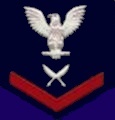 |
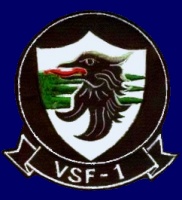 |
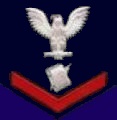 |
September 29, 1966 - May 20, 1967
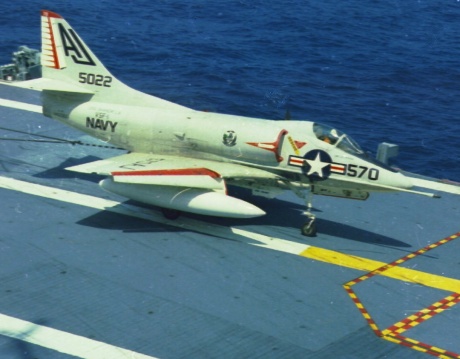
Administration and Personnel Offices
September 29, 1966 - May 20, 1967 |
 |
|
(previously A4d-2) 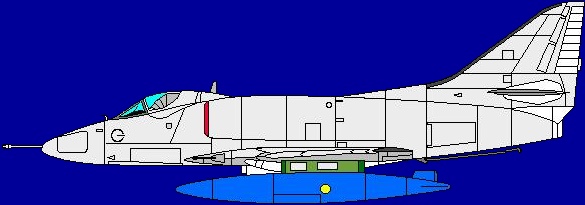
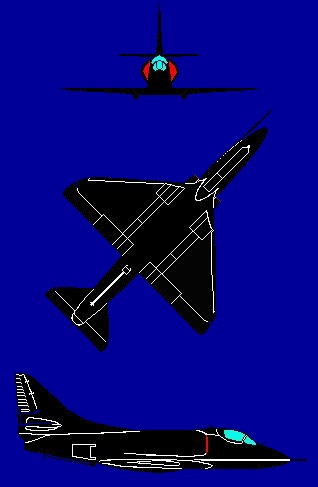 Bureau
Numbers Bureau
Numbers
142082-142141 142416-142423 142674-142953 144868-145062 A4D
(A-4) Skyhawk
First contract 10 Sep 1952Douglas A4D-2 (A-4B) Skyhawk The A4D-2 was the next production version of the Skyhawk. It differed internally from the A4D-1 by having a strengthened rear fuselage structure. The A4D-2 also featured a new single-skin rudder, which was built "inside-out" with the ribs showing and bonding it together rather than by riveting. This corrected a tendency of the rudder to vibrate at high speed, thus creating fatigue cracks. The rudder was also provided with an external trim tab. Perhaps the most noticeable external change was the addition of a non-retractable midair refueling probe to the starboard side of the fuselage. In addition, the centerline attachment point was given the ability to carry a 300 US-gallon "buddy" refueling tank on the centerline pylon. It had a built-in drogue and hose, which could be used to refuel other aircraft in flight. Internally, additional navigational equipment was provided. The ordinance delivery system was improved by the addition of the capability to carry and launch the Bullpup air-to-ground pilot-guided missile. Additional improvements were made to the flight control systems. The landing gear was strengthened and a pressure fueling system was added. The pilot was provided with an Escapac 1 rocket-boosted ejector seat. The first A4D-2 was delivered to the fleet in September of 1957, with the first squadron to receive the plane being the Marine Corps squadron VMA-211. 542 A4D-2s were built. The A4D-2 was redesignated A-4B in September of 1962. As later Skyhawk models became available, many A-4Bs were relegated to Navy and Marine Corps reserve units. Many of them were redesignated TA-4B to reflect their new training role. Several A-4Bs surplus to Navy and Marine Corps requirements were later refurbished and sold to foreign air forces.
15 October 1955 - Lieutenant Gordon Gray, piloting a Douglas A4D-1 Skyhawk, broke the Class C world speed record for 500 kilometers with a speed of 695.163 mph at Muroc, Calif. 24 January
1958 - Major John P. Flynn and Captain Clifford
Before delivery of the A4D-1 to fleet units, an improved version, the A4D-2 (A-4B) was ordered into production. Inprovements incorporated in the A4D-2 (A-4B) Skyhawk were a stronger, "inside-out" rudder construction; a pressure fueling system with a probe for air-to-air refueling; external fuel tanks; stronger landing gear; additional navigation equipment; an improved air-to-ground ordnance delivery system; and an externally-carried "buddy store" package for air-to-air fueling of other aircraft. The first A4D-2 (A-4B) flight occurred on March 26, 1956, flown by Douglas test pilot Dru Wood. Fleet delivery of the A4D-2 (A-4B) began in September 1957. A total of 542 A4D-2 (A-4B) Skyhawks were manufactured, many of which were later modified and/or refurbished and sold to foreign countries (q.v.).
|
||||||||||||||||||||||||||||||||||||||||||
The A4 Skyhawk
Blue Angels Flying A4 Skyhawks
USS
Ticonderoga CVA-14 conducting bombing raids over North VietNam
Douglas
A-4 Skyhawk - Wikipedia
A4B
VSF-1 Skyhawk Photos
Skyhawk
Association
Support
the NAS Alameda Naval Air Museum and the USS Hornet Museum
bswanson7@sbcglobal.net
![]()
![]()
| Site
Search
|
Carrier Air Wing 8 (CVW-8) - 1966/1967 Cruise
|